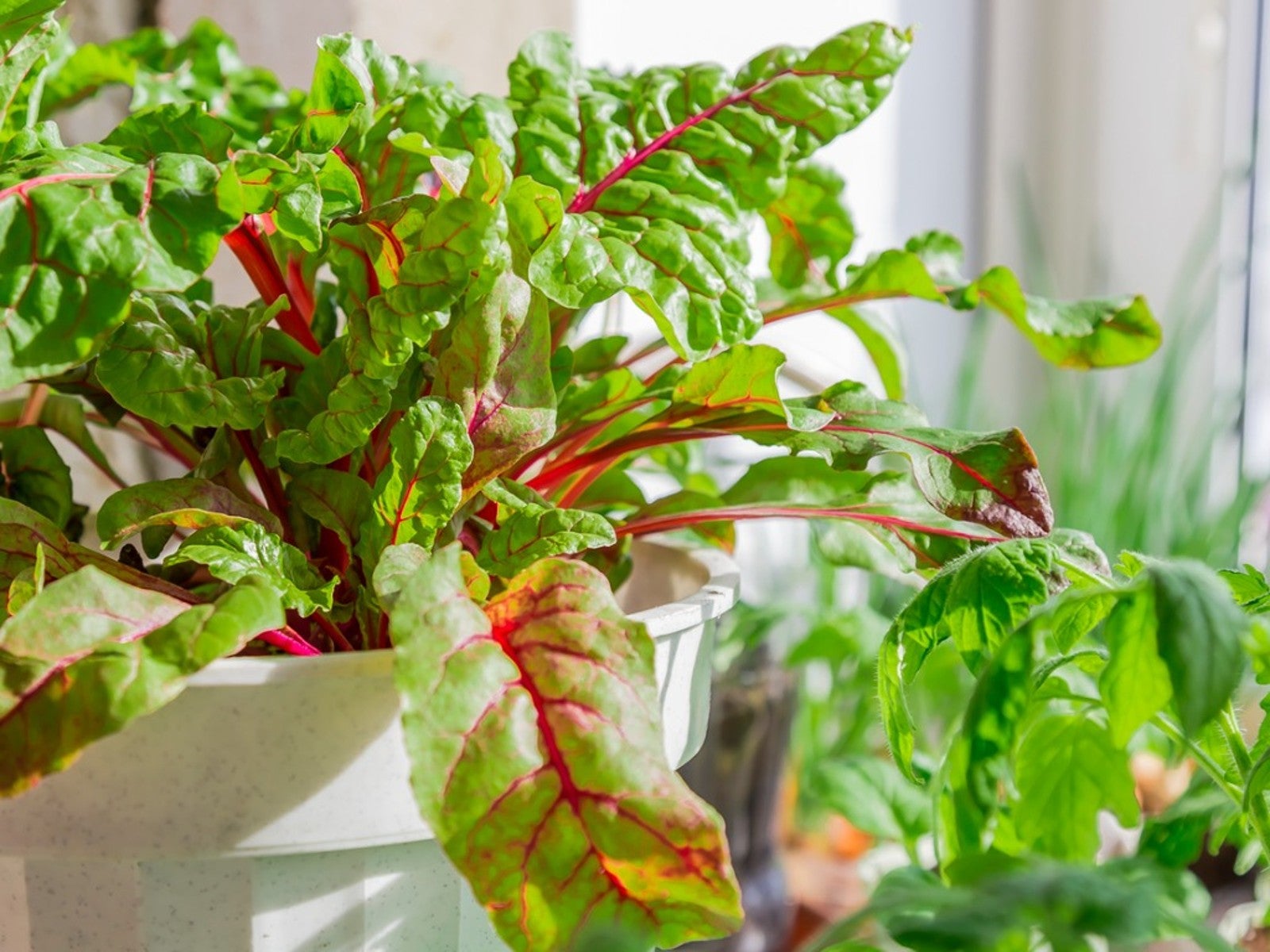Swiss Chard Care In Pots – How To Grow Swiss Chard In Containers

Swiss chard is not only delicious and nutritious but eminently ornamental. As such, planting Swiss chard in containers does double duty; it provides a showy backdrop for other plants and flowers and, since for most of us our seasonal color plantings are located near an entry to the home, makes for easy picking. Read on to find out how to grow Swiss chard in containers.
Growing Swiss Chard in a Pot
‘Bright Lights’ a cultivar awash with red, white, gold, yellow, violet, and orange hues was introduced to the market 20 years ago and since then other cultivars have been introduced. Among these is ‘Fordhook Giant’ a heat tolerant variety for those folks with warmer growing seasons. There’s also the brilliant ruby red ‘Rhubarb’ and brilliantly white types of Swiss chard. The plethora of colors available makes container gardening with Swiss chard a delight.
Swiss chard container gardening can be done with just chard or in combination with other plants. Swiss chard can also be grown in a pot indoors during the colder months for a constant supply of nutritious greens.
It is very easy to grow and tolerates poor soil, negligence on your part, and is frost hardy. Not only is Swiss chard beautiful, but it can be used fresh or cooked. The leaves make colorful stand-ins for spinach and the stalks can be cut up and cooked as you would asparagus.
How to Grow Swiss Chard in Containers
When planting Swiss chard in containers, the pot does not need to be too deep because the root system isn’t deep, but you do want to take into account the large leaves. You can buy transplants or sow your own seeds. If you sow your own seeds, they can be started quite early outdoors, as they thrive in cooler temps. If you want to get a jump start, start the seedlings indoors and then transplant them outside when temperatures begin to warm.
Sow the seeds ½ to an inch apart (1-2.5 cm.). Thin the seedlings to 2 to 3 inches (5-8 cm.) apart. Swiss chard is ready to be picked within four to six weeks. Harvest at this time or if you are growing the plant as an ornamental, leave the leaves until they wilt, turn brown, or are munched on by insects. At that time, remove the outer leaves. The inner leaves will continue to grow.
Swiss Chard Care in Pots
Swiss chard care in pots is fairly minimal since the plant is very resilient. It doesn’t mind being crowded and tolerates poor soil without any additional fertilizer. The plant also prefers a shaded location.
Sign up for the Gardening Know How newsletter today and receive a free copy of our e-book "How to Grow Delicious Tomatoes".
That said, like any plant, it will respond to additional nutrition. Swiss chard can get bitter when summer heat blazes, so be sure to give it plenty of water. Plants that are grown in pots need more watering than those in the garden, so keep an eye on them.

Amy Grant has been gardening for 30 years and writing for 15. A professional chef and caterer, Amy's area of expertise is culinary gardening.
